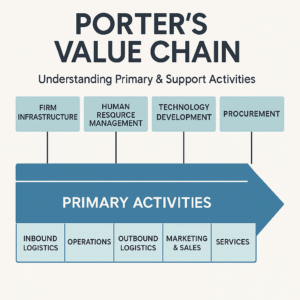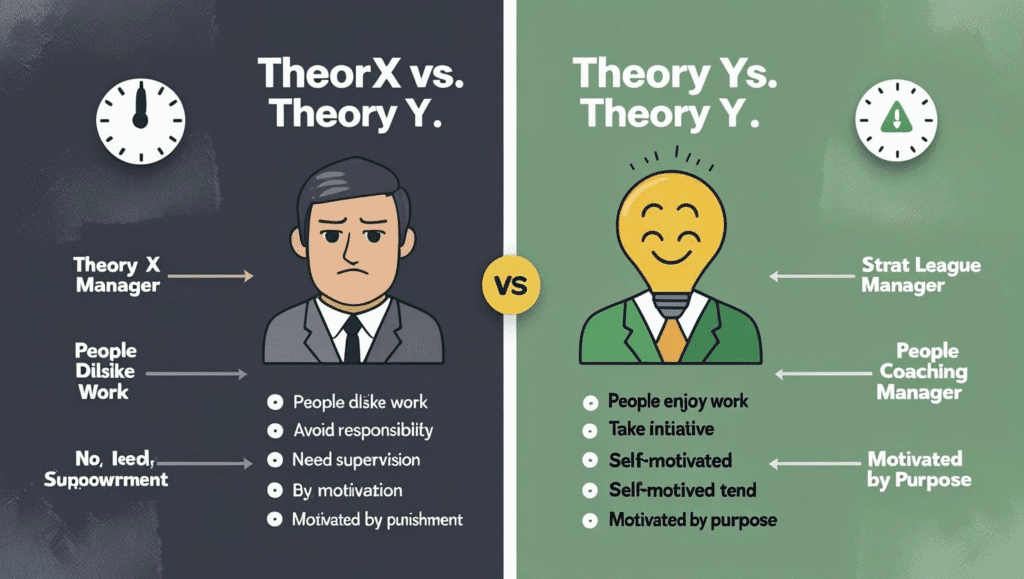Porter’s Value Chain Explained: A Deep Dive into the Four Support Activities
Developed by Harvard Business School professor Michael E. Porter, the Value Chain is a powerful strategic tool for analyzing how a company creates value for its customers. It dissects a firm into its core activities to identify sources of competitive advantage. These activities are split into two categories: Primary Activities and Support Activities. While primary activities directly create the product or service, the four support activities provide the essential underlying foundation that enables them to function efficiently and effectively.
The Four Support Activities
Firm Infrastructure
This refers to the organizational context and management systems that support the entire value chain, rather than individual activities. It’s the “nervous system” of the company.
- General Management
- Planning & Strategy
- Finance & Accounting
- Legal and Quality Control
Impact: A strong, efficient infrastructure lowers overhead and enables better-informed decisions, creating a company-wide competitive advantage.
Human Resource Management
This activity involves all functions related to recruiting, hiring, training, developing, and compensating personnel. A company is only as good as its people.
- Recruitment & Selection
- Training & Skill Development
- Performance Management
- Compensation & Benefits
Impact: Effective HRM ensures the right talent is in the right roles, leading to higher productivity, innovation, and employee retention across all departments.
Technology Development
This encompasses the activities that manage and improve the technology of a firm, from R&D to process automation and IT systems. It is a key driver of innovation.
- Research & Development (R&D)
- Product & Process Design
- IT Systems & Automation
- Data Analytics
Impact: Technology can lower costs, improve product quality, and create differentiation. A firm that excels here can out-innovate its competitors.
Procurement
This is the function of purchasing the various inputs used in the value chain. It’s not just buying, but strategic sourcing of all necessary resources.
- Sourcing Raw Materials
- Negotiating Supplier Contracts
- Vendor Relationship Management
- Purchasing Equipment & Services
Impact: Strategic procurement can dramatically lower input costs, improve quality, and ensure reliability, directly benefiting operations and the firm’s bottom line.
Visualizing the Value Chain
Frequently Asked Questions
What are the Primary Activities in Porter’s Value Chain?
The five Primary Activities are the core functions that sequentially create value. They are: 1. Inbound Logistics (receiving and storing inputs), 2. Operations (transforming inputs into the final product), 3. Outbound Logistics (distributing the product to customers), 4. Marketing & Sales (persuading customers to purchase), and 5. Service (support after the sale).
Why are they called ‘Support’ activities?
They are called “support” because they don’t directly add value to the end product in a linear sequence like the primary activities do. Instead, they provide the necessary support and infrastructure that enable the primary activities to be performed effectively. Each support activity can influence every single primary activity.
How can a small business use the Value Chain model?
A small business can use the model to map out its key processes. By analyzing each of the nine activities (primary and support), the owner can identify which areas are most critical to delivering customer value, where costs can be reduced, and where there are opportunities for differentiation, even on a small scale.
Is Porter’s Value Chain still relevant today?
Absolutely. While the business landscape has evolved (especially with digital services), the fundamental concept of analyzing a business as a system of value-creating activities remains a core strategic exercise. It helps businesses understand how they operate and where they can build a sustainable competitive advantage. The activities themselves can be adapted to modern business models.


